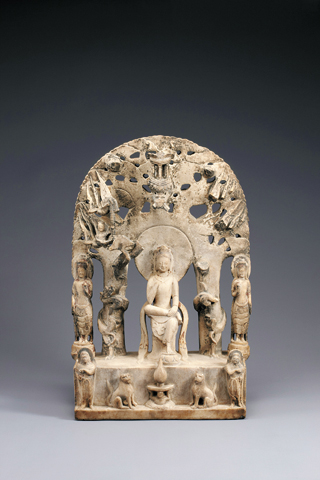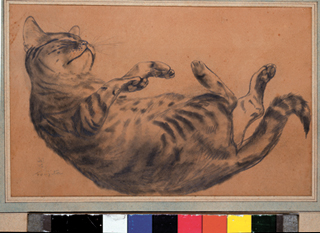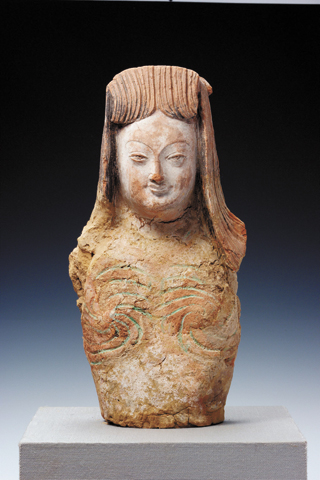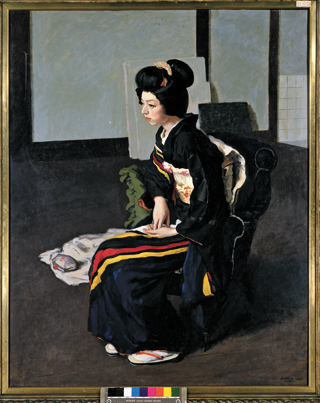Exhibition explores Japan’s colonialism

“Pensive Bodhisattva” from China’s Northern Qi Dynasty (550-577)
The same goes for museums.
This is the central idea of “Collecting Asian Objects in Colonial Korea, 1910-1945,” an exhibition that started its 10-week run at the National Museum of Korea last week.
The concept is to show artwork collected by Japan during its colonization of Korea (1910-45). The government-run gallery procured the items when it took over two museums that were owned by the Japanese state under colonial rule.
“With the exhibition, we hope to go back to that period and study why Japan collected the Asian art they collected then,” Kim Yong-na, the museum’s director, told journalists on Oct. 27. “The collection then reflects a distorted view, a stranger’s view. .?.?.?We want to go back to square one and re-examine things from our perspective.”

“Cat,” an early 20th-century painting by Fujita Tsuguharu (1886-1968)
Among the 200 artworks being shown at the exhibition, a large mural at the entrance stands out.
The work from 1926 by Wada Sanzo (1883-1967) was formerly located at the north wall of the Joseon museum’s main hall. It depicts a tale indigenous to both Japan and Korea, which curators say Japan partly used to justify its colonization.
In the first section, which is dedicated to ancient Asian art that Japan collected during the early years of its colonization, the exhibition showcases relics from China’s Han Dynasty (206 B.C. ? A.D. 220). Japan collected these artifacts in an attempt to prove that Korea’s ancient culture originated from China.

“Lady” from eighth- to ninth-century Turpan City, China
The third focuses on Buddhist steles that Japan had collected, through which museum officials aim to show Japan’s beliefs that Buddhist art is the yardstick of cultural development and how it thought Korea had experienced a cultural recession during the Joseon Dynasty (1392-1910), a society based on Confucianism.
The last section, dedicated to modern art, showcases paintings and sculptures by Japanese artists that the country’s government favored at the time. Curator Lee Tae-hee says many of the works show Japan’s imperialistic intentions.

“Girl with Japanese Hairdo” (1935) by Koiso Ryohei (1903-88) The National Museum of Korea says that Asian ancient relics and modern art collected by Japan during its 1910-45 colonization of Korea reflect the ideologies it wanted to enforce on the nation. Provided by the National Museum of Korea
“In the painting, you can see banners saying ‘Let’s Finish the Greater East Asia War’ and ‘Let’s Defeat the British and America,’?” Lee said. “Also, by portraying the Chinese Huabei region that Japan invaded as a peaceful and abundant village after the 1941 Pacific War, it can be interpreted that Japan intended to beautify its war aggression.”
When asked about the possibility that the exhibition could be viewed politically, given Japan’s recent rightist swing and prolonged disputes over history with Korea, director Kim said no.
“The exhibition has nothing to do [with the current bilateral relations],” she told the Korea JoongAng Daily.
“We have been studying this since 2008 and releasing annual reports. We are just showing what we have found so far.”
BY KIM HYUNG-EUN [hkim@joongang.co.kr]
*“Collecting Asian Objects in Colonial Korea, 1910-1945” runs until Jan. 11 at the National Museum of Korea in Yongsan District, central Seoul. Admission is free. Go to Ichon Station (lines No. 1 and 4), exit 2.










with the Korea JoongAng Daily
To write comments, please log in to one of the accounts.
Standards Board Policy (0/250자)